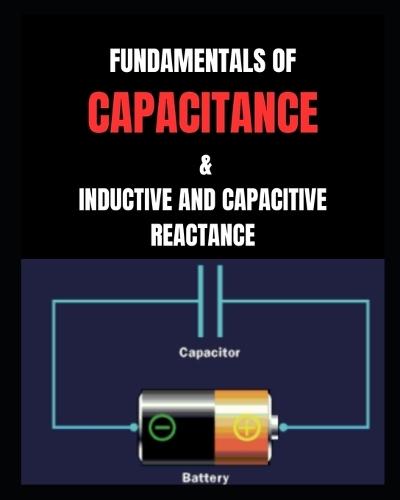Overview
The book starts with a brief introduction to capacitance, defining it as the ability of a device to store electric charge and explaining that it is measured in Farads (F). The first section of the book discusses the basic concepts and formulas related to capacitance. It explains that capacitance is the ratio of the charge stored in a device to the voltage applied to it, and it provides the formula for capacitance, which is C = Q / V, where C is the capacitance in Farads (F), Q is the charge in Coulombs (C), and V is the voltage in Volts (V). The section also covers the concept of the permittivity of free space (εo), which is a measure of the ability of a material to store electric charge, and explains how it is used in the formula for capacitance. The second section discusses the capacitance of various types of capacitors, including parallel plate capacitors, capacitors in series, and capacitors with a dielectric material. It provides formulas for calculating the capacitance of each type of capacitor and explains how the presence of a dielectric material can increase the capacitance. The third section covers the energy stored in a capacitor and the time constant of a capacitor-resistor (RC) circuit. It explains that the energy stored in a capacitor is proportional to the square of the voltage across it and provides the formula for calculating the energy stored in a capacitor. It also defines the time constant and explains how it is related to the resistance and capacitance of a circuit. The fourth section of the book discusses the types of capacitors used in electronic circuits, including ceramic capacitors, electrolytic capacitors, film capacitors, and tantalum capacitors. It provides a brief overview of each type of capacitor and its characteristics. The final section covers capacitive and inductive reactance in AC circuits. It explains that capacitive reactance arises in circuits that contain capacitors and inductive reactance arises in circuits that contain inductors. It provides formulas for calculating the capacitive and inductive reactance and explains how they affect the flow of current in a circuit. Overall, the book provides a detailed overview of the concept of capacitance and its application in electronic circuits. It covers various formulas and concepts related to capacitance, including the basic formula for capacitance, the capacitance of different types of capacitors, energy stored in a capacitor, time constant, and capacitive and inductive reactance in AC circuits.--- keywords Capacitance Capacitor Electric charge Voltage Farad Permittivity Dielectric material Parallel plate capacitor Series capacitor Capacitance formula Energy stored in a capacitor Time constant RC circuit Ceramic capacitor Electrolytic capacitor Film capacitor Tantalum capacitor Capacitive reactance Inductive reactance AC circuits
Full Product Details
Author: Red Dot Publications
Publisher: Independently Published
Imprint: Independently Published
Dimensions:
Width: 20.30cm
, Height: 0.60cm
, Length: 25.40cm
Weight: 0.227kg
ISBN: 9798878050838
Pages: 106
Publication Date: 31 January 2024
Audience:
General/trade
,
General
Format: Paperback
Publisher's Status: Active
Availability: In Print

This item will be ordered in for you from one of our suppliers. Upon receipt, we will promptly dispatch it out to you. For in store availability, please contact us.



